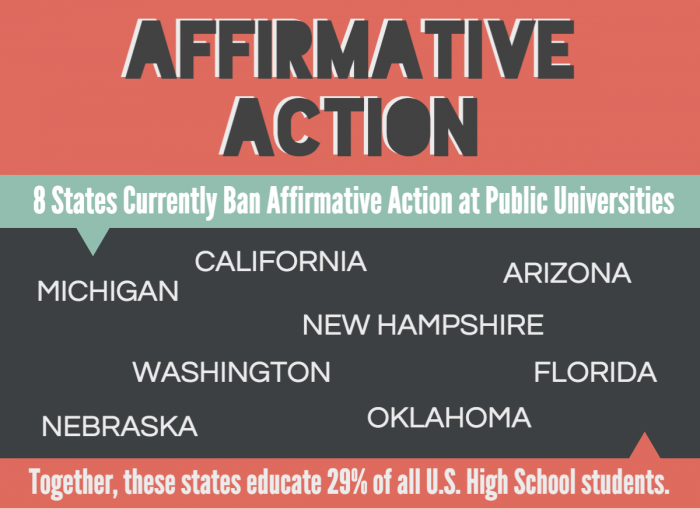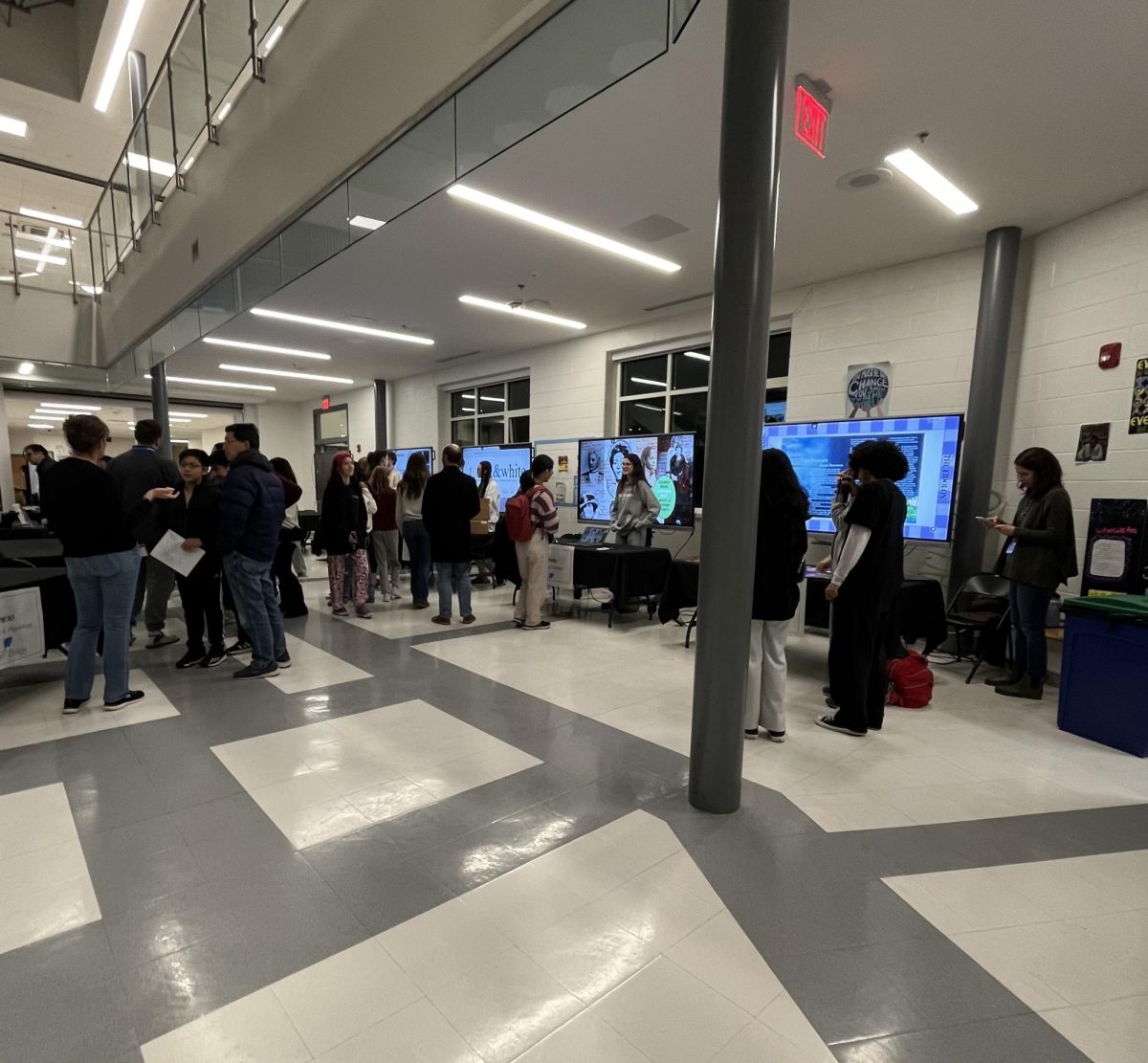Competition in the college application process is fierce, so when admission boards use race as a factor in admissions, some people question the system’s fairness.
One of these people is Abigail Fisher, a white former high school student in Texas. After she was rejected for admission to the University of Texas, Fisher publicized her complaints about affirmative action by taking the University to court.

In addition to the regular application process, Texas has a Top 10 Percent plan, which automatically admits Texas students in the top 10 percent of their high school class. Fisher was not in the top 10 percent of her class, and sued on the basis that she was denied regular admission because of her race.
The Supreme Court recently heard the arguments for the case Fisher v. University of Texas, in which the ruling will decide whether or not considering race in admissions decisions for publicly funded universities violates the Constitution.
The hearing this December was the first time the Court examined the case with strict scrutiny—meaning that they’d have to decide that the law promotes government interests—though it had already examined the case without strict scrutiny in 2012. Fisher v. University of Texas started its federal judicial process after the district courts and the Court of Appeals found University of Texas’ affirmative action policy to be constitutional; it was ultimately appealed to the Supreme Court.
Generally, affirmative action supporters aim to increase equity in college admissions, while opponents argue that lowering admission standards to admit more minorities puts possibly-unprepared students at a disadvantage in the classroom. During the Supreme Court hearing, the justices focused on this general impact of race in an educational setting.
“What unique perspective does a minority student bring to a physics class?” Chief Justice John Roberts asked, calling into question the educational value of affirmative action.
Regardless of whether universities aim to diversify opinions in a classroom setting or not, they use affirmative action in hope of giving opportunities to students who may not otherwise have those options. But other Justices questioned whether it was in students’ best interests to admit them to universities they may not be ready for.
“There are those who contend that it does not benefit African Americans to get them into the University of Texas where they do not do well, as opposed to having them go to a less-advanced school, a slower-track school where they do well,” Justice Antonin Scalia said.
Scalia faced backlash and criticism for what many have called racist comments. Senate minority leader Harry Reid compared Scalia’s comments to Donald Trump’s views on Muslims and immigration.
“The only difference between the ideas endorsed by Trump and Scalia is that Scalia has a robe and a lifetime appointment,” Reid said when he took the Senate floor after the hearing. “Ideas like this don’t belong on the Internet, let alone the mouths of national figures.”
In another recent affirmative action case, Grutter v. Bollinger (2003), the Supreme Court upheld the practice of using race as one of many factors in college admissions. Speaking on behalf of the Court, Justice Sandra Day O’Connor prescribed a 25-year window in which affirmative action would be lawful, but after which it was hoped that considering race would be unnecessary.
Halfway through the 25 years, there is still a significant achievement gap between black or Hispanic students and white or Asian students. If the Court rules in favor of the university’s affirmative action policy in the Fisher case, admission boards will have another 12 years to increase diversity and opportunity using racial preference.
Counselor Kari Wislar, who used to work at a high school in Georgia, remembers a conversation with an black student who asked her about affirmative action.
“What she responded has always resonated with me,” Wislar said. “She said ‘Ms. Wislar, in a perfect world, we wouldn’t need affirmative action. But we’re not in a perfect world.”
Universities with affirmative action say that their policies help them achieve a critical mass of minority students so that students feel represented on campus and comfortable expressing their opinions.
In both UMD and UVA’s affirmative action policies, the mission statement includes intent to eliminate discrimination and promote equality in the selection of their students and staff.
But some believe socioeconomic factors, rather than the current racial system, are a better factor to identify in college admissions.
“Racial preferences boost black and Latino candidates’ chances of admissions by 28 percentage points, but elite colleges give no boost whatsoever for low income students,” Richard Kahlenberg wrote in a recent Century Foundation blog.
Kahlenberg argues that looking into class instead of race would shift the focus of affirmative action to disadvantaged students rather than students of different ethnicities.
“Economically disadvantaged students of all races face extra obstacles, while President Obama himself has acknowledged that his own privileged children, although African American, do not deserve a preference,” he said.
Black and Hispanic students are the primary benefactors of affirmative action, but other groups of students feel as though they are either unaffected, or even hurt, by stereotypes. Anjali Jha, an Asian sophomore, falls into this other group.
“Some people do have a disadvantage, but it’s also harder for Asian students because we’re just so competitive, I guess,” Jha said. “We’re just not in a category where [affirmative action] could really help us.”
If the Court’s June decision strikes down the practice of race-based admissions, alternative admission policies could be implemented to ensure that the process remains as fair as possible.
“Universities, to their credit, care about racial diversity,” Kahlenberg said. “So if racial preferences are struck down, colleges will come up with something even better—affirmative action programs based on economic disadvantage.”
While standards still might change depending on the applicant, household income and daily living circumstances would be a major deciding factor, rather than skin tone.
“In an ideal world, we want everybody to be admitted based on their credentials,” Wislar said. “But is the world fair? No.”









suggestion • Feb 3, 2016 at 12:12 pm
it will be easier for readers to find more info on this topic if you hyperlink specific words to the sources they come from, like the Century Foundation blog, the Reid quote and the justices’ quotes